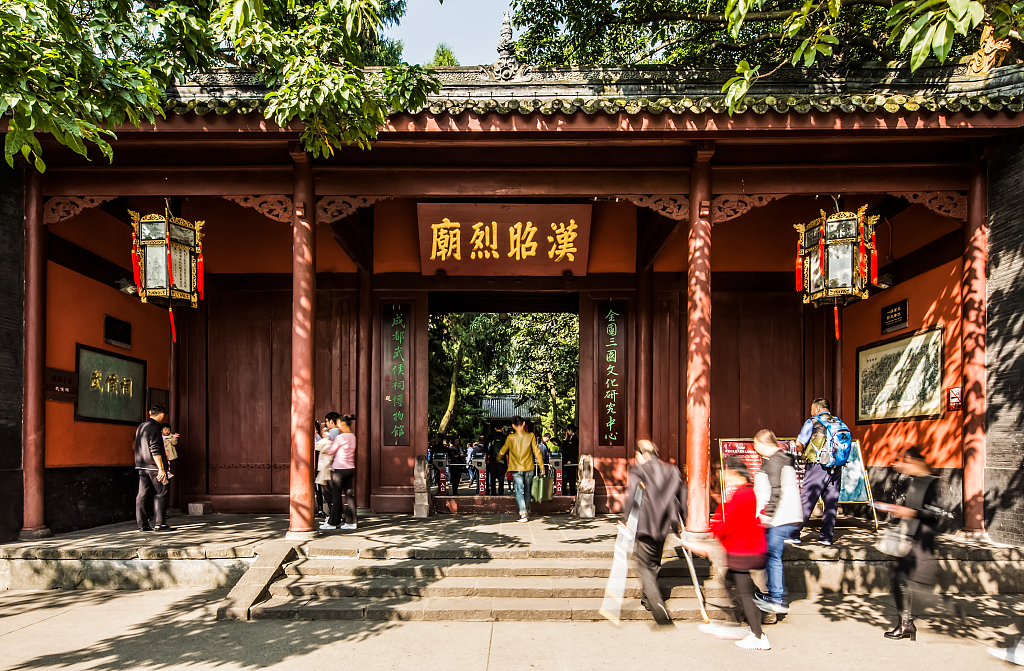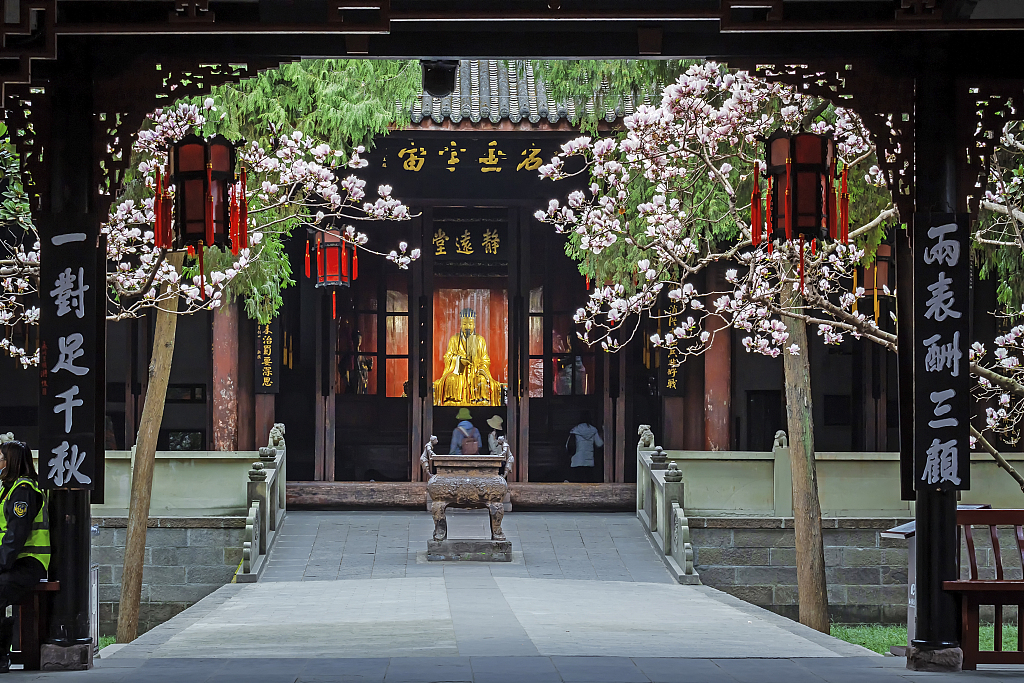Chengdu's Wuhou Shrine Museum announced Tuesday that they discovered eight new Qing Dynasty (1644-1911) stone inscriptions in the Zhuge Liang Hall, located on the central axis of the heritage area.

The entrance of the Wuhou Shrine Museum in Chengdu, Sichuan Province, China, May 15, 2018. /CFP
The entrance of the Wuhou Shrine Museum in Chengdu, Sichuan Province, China, May 15, 2018. /CFP
The Wuhou Shrine Museum in Chengdu has a history of nearly 1,800 years and is China's only shrine where the emperor and ministers are enshrined together. The idea behind Chengdu's Wuhou Shrine lies in the philosophy of governance of a wise and virtuous ruler and the family sentiment of a wise and patriotic man who fought for his ideals.
According to the Chengdu Wuhou Shrine Museum, during the Museum's display enhancement project in February, the plaster layer on the north wall of Zhuge Liang Hall peeled off, revealing a corner of the stone inscription.
After professional institutions scanned the walls, the stone tablets were found to have eight inscriptions, judging by the spatial location and inscription content.
The earliest date of the newly discovered stone inscriptions is 1672, and the latest is 1821. Five of the inscriptions are recorded in the history of the Wuhou Shrine. The other three are unrecorded and constitute an essential addition to the shrine's history.
The inscriptions include the writings of Sichuan officials at that time, the "Chu Shi Biao" written by a Qing Dynasty scholar, records of the Wuhou Shrine rituals and calligraphy and paintings of the literati who visited the shrine during the period.

The Zhuge Liang Hall of Wuhou Shrine Museum in Chengdu, Sichuan, China. /CFP
The Zhuge Liang Hall of Wuhou Shrine Museum in Chengdu, Sichuan, China. /CFP
The removal of the plaster layer is still in the preliminary stage. The Chengdu Wuhou Shrine Museum said the newly discovered inscriptions will be displayed to visitors after the heritage conservation work is complete.



